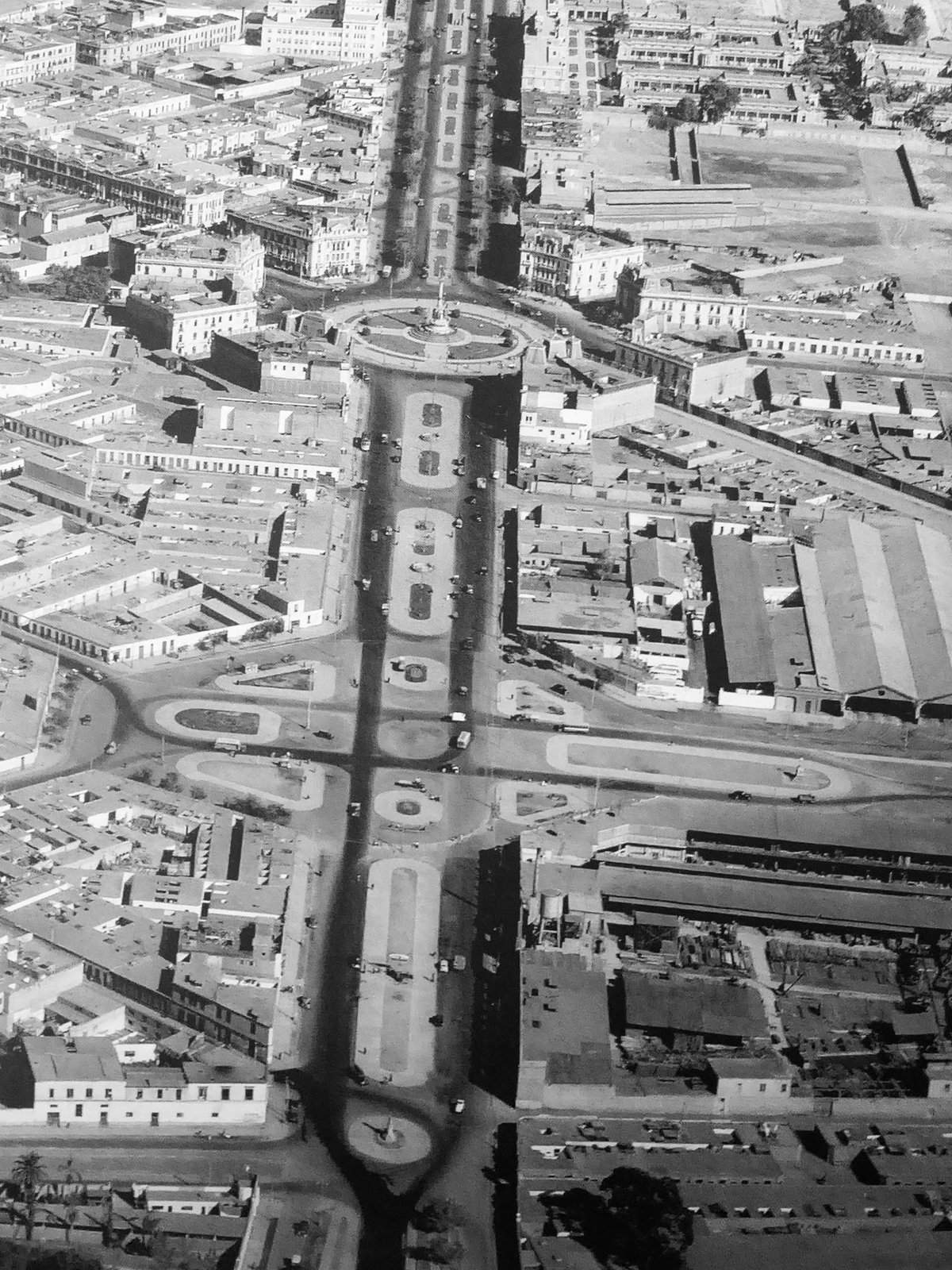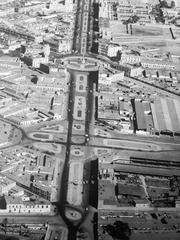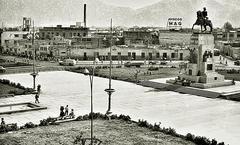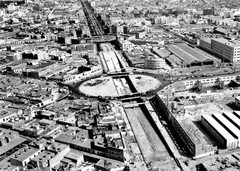
Visiting Plaza Ramón Castilla, Lima, Peru: Complete Guide, Tickets, Hours, and Tips
Date: 14/06/2025
Introduction
Plaza Ramón Castilla is a vibrant public square in the heart of Lima’s historic center, representing both Peru’s rich republican history and its dynamic contemporary urban life. Named after the influential 19th-century president Ramón Castilla, the plaza offers a blend of monumental art, open green spaces, and seamless integration with Lima’s transportation network. Whether you’re a history enthusiast, a cultural explorer, or a casual traveler, this guide provides comprehensive, detailed information to help you make the most of your visit—including historical context, practical tips, accessibility advice, safety recommendations, and nearby attractions.
Table of Contents
- Historical Origins and Significance
- Ramón Castilla: Architect of Modern Peru
- The Plaza as a Site of Memory and Identity
- Artistic and Architectural Features
- Urban Integration and Transportation
- Visiting Hours, Tickets, and Accessibility
- Safety and Visitor Tips
- Notable Nearby Attractions
- Suggested Itinerary
- Frequently Asked Questions (FAQ)
- Conclusion
- References
Historical Origins and Significance
Plaza Ramón Castilla, once known as Plaza Unión, stands as a testament to Peru’s republican era and its quest for national identity. The square is named after Ramón Castilla y Marquesado, a pivotal president who led Peru through modernization and the abolition of slavery (Wikipedia; El Comercio). Its location at the intersection of major avenues makes it both historically and geographically significant within Lima (pe.worldorgs.com).
Ramón Castilla: Architect of Modern Peru
Born in 1797 in Tarapacá, Ramón Castilla was a military leader and reformist president whose legacy includes the abolition of slavery in 1854 and the modernization of Peru’s state institutions. His administration was characterized by economic growth, social reforms, and infrastructural development, positioning Peru as a stable and influential nation in the 19th century (Encyclopedia.com; History of Peru 1845–1866).
The Plaza as a Site of Memory and Identity
At the center of the plaza stands an imposing equestrian statue of Castilla, created by José Peña y Peña and inaugurated in 1969 (es.wikipedia.org). The statue, crafted from granite and bronze, symbolizes republican values and Castilla’s enduring influence. The plaza forms part of Lima’s UNESCO-listed historic center, connecting with other iconic squares such as Plaza de Armas and Plaza San Martín, and narrates Peru’s journey from colonial rule to republican modernity (Free Walking Tours Peru).
Artistic and Architectural Features
The plaza’s oval layout is typical of Lima’s urban planning for major intersections. Landscaped gardens and paved walkways surround the central monument, providing green space and a tranquil setting amidst the bustle of the city. The surrounding architecture includes eclectic early 20th-century buildings, reflecting Lima’s layered history (es.wikipedia.org).
Urban Integration and Transportation
Plaza Ramón Castilla is a key transit hub, with the Metropolitano bus rapid transit system running directly beneath it. The Plaza Castilla station allows for easy access, making the plaza a crossroads of Lima’s historic and modern infrastructure (en.wikipedia.org; pe.worldorgs.com). Recent renovations have improved pedestrian access and expanded green areas, contributing to Lima’s ecological infrastructure (use.metropolis.org).
Visiting Hours, Tickets, and Accessibility
- Hours: The plaza is open to the public 24 hours a day.
- Admission: Entry is free; no tickets are required.
- Accessibility: The plaza features flat, paved surfaces and ramps, making it accessible for wheelchairs and strollers. Some nearby buildings may have limited accessibility due to historic construction.
- Getting There: Easily reached via the Metropolitano (Plaza Castilla station), city buses, or taxis. App-based ride services (Uber, InDrive) are recommended for convenience and safety (southamericabackpacker.com).
Safety and Visitor Tips
- Daytime Visits: Recommended for safety and the best atmosphere.
- Pickpocketing: Stay vigilant, especially in crowded areas. Keep valuables secure (travelbuddiesperu.com).
- Taxis: Use registered or app-based services to avoid scams.
- Currency Exchange: Only exchange money at official banks or authorized locations.
- Nighttime Safety: Exercise caution after dark, travel in groups, and use well-lit routes (travelpander.com).
- Restrooms: No public restrooms in the plaza; use facilities at nearby cafes or restaurants.
- Photography: The monument and gardens provide excellent photo opportunities, especially during golden hour. Always ask permission before photographing individuals.
- Cultural Etiquette: Greet locals politely and respect cultural events and religious sites.
Notable Nearby Attractions
- Mercado Municipal Gran Mariscal Ramón Castilla: One of Lima’s largest markets, offering fresh produce, traditional Peruvian food, and artisan crafts (Mercado Municipal Gran Mariscal Ramón Castilla).
- Plaza San Martín: Famous for its neoclassical architecture and the monument to José de San Martín (The Planet D).
- Plaza de Armas (Plaza Mayor): Lima’s historic heart, home to the Government Palace and Lima Cathedral (Plaza de Armas Overview).
- Natural History Museum: Features exhibits on Peruvian biodiversity and paleontology (The Planet D).
- Barranco: Lima’s bohemian district, renowned for vibrant street art and nightlife (The Planet D).
- Magic Water Circuit: An illuminated fountains park for evening entertainment.
Suggested Itinerary
- Morning: Start at Plaza Ramón Castilla and visit the nearby market for breakfast.
- Midday: Walk to Plaza San Martín for coffee and architectural sightseeing.
- Afternoon: Explore Plaza de Armas or the Natural History Museum.
- Evening: Enjoy dinner in Barranco or attend a local cultural event.
Frequently Asked Questions (FAQ)
Q: What are the visiting hours and entrance fees?
A: The plaza is open 24/7 and access is free.
Q: Is Plaza Ramón Castilla wheelchair accessible?
A: Yes, the plaza features accessible pathways, though some nearby historic buildings may have limited access.
Q: How do I reach the plaza by public transport?
A: Use the Metropolitano bus system and exit at Plaza Castilla station, or take a city bus or taxi.
Q: Are guided tours available?
A: Yes, many walking tours of Lima’s historic center include Plaza Ramón Castilla.
Q: What are the best times to visit?
A: Daytime, especially mornings and late afternoons during the dry season (May to October).
Q: What safety precautions should I take?
A: Stay alert for pickpockets, use registered taxis, and avoid isolated areas after dark.
Conclusion
Plaza Ramón Castilla embodies the intersection of Peru’s historical legacy and modern urban life. Its central location, monumental artistry, and accessibility make it a must-visit site for anyone exploring Lima. By planning your visit with safety and accessibility in mind—and taking time to explore the vibrant markets, neighboring plazas, and cultural attractions nearby—you’ll gain a deeper appreciation for Lima’s past and present.
References
- El Comercio, 1969, Installation of the Ramón Castilla statue
- Wikipedia, Ramón Castilla biography
- Encyclopedia.com, Castilla, Ramón (1797–1867)
- Free Walking Tours Peru, Historic Center of Lima
- Wikipedia, Plaza Ramón Castilla
- Wikipedia (Spanish), Monumento a Ramón Castilla (Lima)
- pe.worldorgs.com, Plaza Ramón Castilla tourist information
- Mercado Municipal Gran Mariscal Ramón Castilla official page
- The Planet D, Best Things to Do in Lima Peru
- South America Backpacker, Lima Safety Tips
- TravelPander, Areas in Lima to Avoid
- Salt in Our Hair, Peru Travel Guide
- Audiala app, travel guides and tours

















































































































